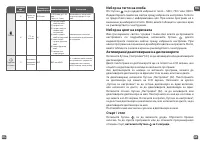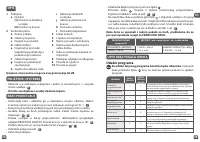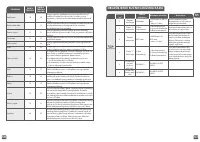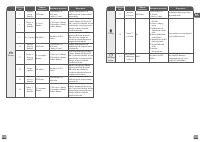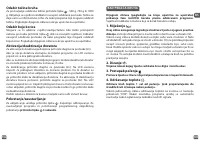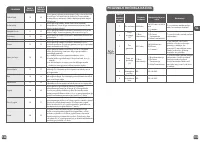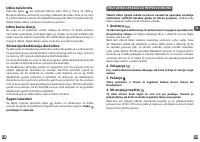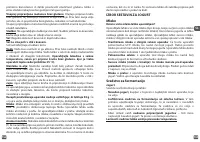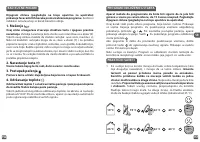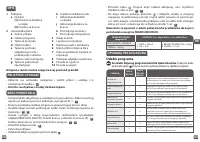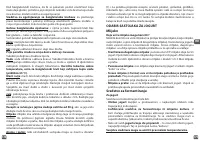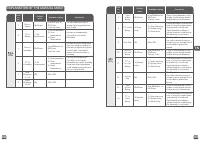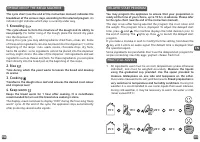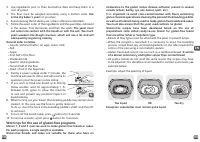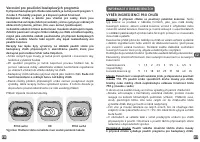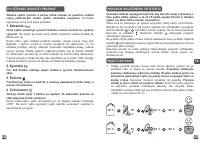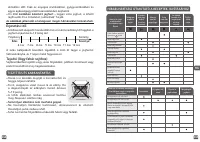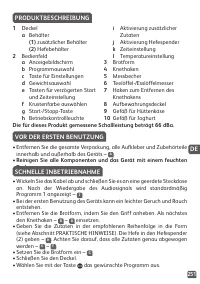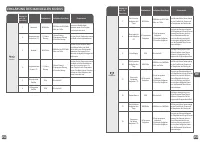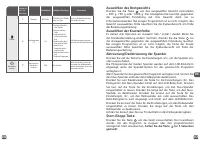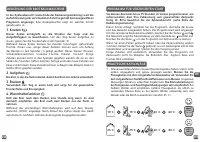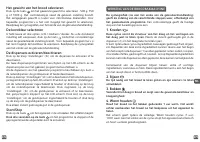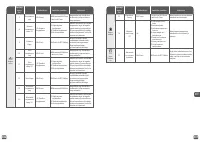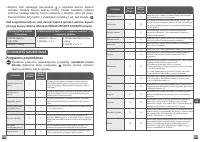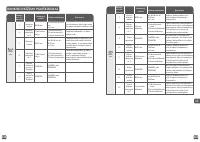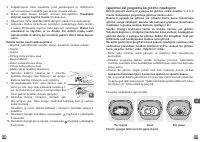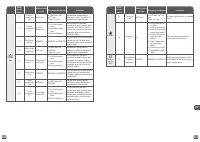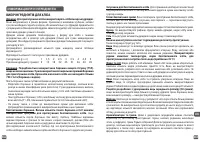Хлебопечки TEFAL PF250135 - инструкция пользователя по применению, эксплуатации и установке на русском языке. Мы надеемся, она поможет вам решить возникшие у вас вопросы при эксплуатации техники.
Если остались вопросы, задайте их в комментариях после инструкции.
"Загружаем инструкцию", означает, что нужно подождать пока файл загрузится и можно будет его читать онлайн. Некоторые инструкции очень большие и время их появления зависит от вашей скорости интернета.

195
194
EN
CHOICE OF INGREDIENTS FOR BREAD
Yeast: Bread is made using baker's yeast. This type of yeast is sold in
several forms: small cubes of compressed yeast, active dry yeast to be
rehydrated or instant dry yeast. Yeast is sold in supermarkets (bakery or
fresh foods departments), but you can also buy compressed yeast from
your baker.
The yeast can be directly incorporated in your machine's pan with
the other ingredients or into the yeast dispenser (for instant dry yeast
only). Nonetheless consider thoroughly crumbling the compressed yeast
between your fingers to facilitate its dispersion.
Follow the recommended amounts (see the equivalences chart below).
Quantity/weight equivalences between dry yeast and compressed yeast:
Dry yeast (in tsp)
1 1.5 2 2.5 3 3.5 4 4.5 5
Compressed yeast (in g)
9
13 18 22 25 31 36 40 45
Flours: Using T55 flour is recommended, unless otherwise indicated in
the recipes. When using mixes of special flour types for bread, brioche
or milk bread, do not exceed 750 g of dough in total (flour + water).
Depending on the quality of the flour, the bread making results may also
vary.
• Keep flour in a hermetically sealed container, since flour reacts to
fluctuations in climate conditions (humidity). Adding oats, bran, wheat
germ, rye or whole grains to the bread dough, will produce a bread that
is denser and less fluffy.
• The more a flour is based on whole grains, that is, containing a part of
the outer layers of a wheat grain (T>55), the less the dough will rise and
the denser the bread will be.
• You will also find commercially available ready-to-use preparations for
breads. Please refer to the manufacturer's recommendations for the use
of these preparations.
Gluten-free flour: Using large quantities of these flour types to make
bread calls for the use of the gluten-free bread program. There is a large
number of flour types that do not contain any gluten. The best known are
buckwheat flour, rice flour (either white or whole grain), quinoa flour, corn
flour, chestnut flour, millet flour and sorghum flour.
INFORMATION ON THE INGREDIENTS
For gluten-free breads, in order to try to recreate the elasticity of gluten,
it is essential to mix several types of non bread making flours and to add
thickening agents.
Thickening agents for gluten-free breads: To obtain a proper consistency
and to attempt to imitate the elasticity of gluten, you may add some
xanthan gum and/or guar gum to your preparations.
Ready-to-use gluten-free preparations: They make it easier to make
gluten-free bread since they contain thickeners and have the advantage
of being completely guaranteed to be gluten-free — some are also
organic.
All brands of ready-to-use gluten-free preparations do not yield the same
results.
Sugar: Don't use sugar lumps. Sugar feeds the yeast, gives a good flavour
to the bread and improves the crust colour.
Salt: It regulates the activity of the yeast and gives flavour to bread.
It must not come into contact with the yeast prior to the start of the
preparation.
It also improve the structure of the dough.
Water: Water rehydrates and activates the yeast. It also hydrates
the flour's starch and enables the loaf to be formed. Water may be
replaced, in whole or in part, by milk or other liquids.
Use liquids at room
temperature, except for gluten-free breads, which require the use of
warm water (approximately 35°C).
Fats and oils: Fats make the bread fluffier. It will also keep better and
longer. Too much fat slows the rise of the dough. If you use butter,
crumble it into small pieces or soften it. Do not incorporate melted butter.
Prevent the fat from coming into contact with the yeast, since the fat
could prevent the yeast from rehydrating.
Eggs: They improve the bread's colour and favour good development of
the loaf. If you use eggs, reduce the quantity of liquid accordingly. Break
the egg and add the necessary liquid until you obtain the quantity of
liquid indicated in the recipe.
The
recipes have been designed for a medium-sized egg of 50 g, if the
eggs are larger, add some flour; if the eggs are smaller, add a little less
flour.
Milk: Milk has an emulsifying effect that leads to the creation of more
regular cells, and therefore an attractive loaf appearance. You may use
Характеристики
Остались вопросы?Не нашли свой ответ в руководстве или возникли другие проблемы? Задайте свой вопрос в форме ниже с подробным описанием вашей ситуации, чтобы другие люди и специалисты смогли дать на него ответ. Если вы знаете как решить проблему другого человека, пожалуйста, подскажите ему :)










































